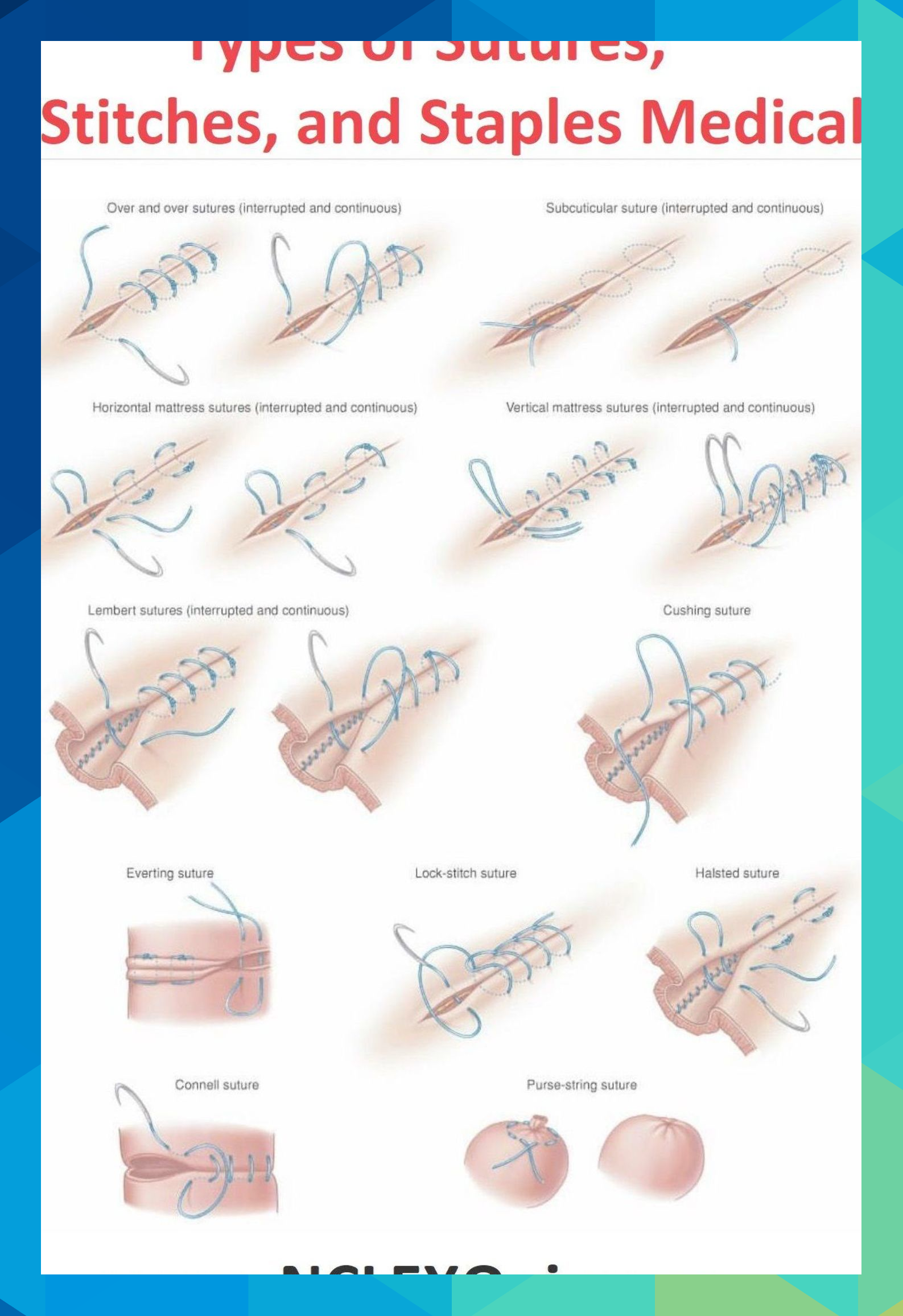Care for sutures. Expert Guide: How to Care for Stitches and Promote Proper Healing
How do you properly care for stitches. What are the best practices for wound healing. When should you seek medical attention for your sutures. How can you minimize scarring after stitches removal.
Understanding Stitches: What They Are and Why They Matter
Stitches, also known as sutures, are medical devices used to hold wound edges together to facilitate healing. They play a crucial role in wound management by reducing bleeding, lowering infection risk, and minimizing scarring. Stitches come in various materials, including nylon and silk, with some types designed to dissolve naturally while others require removal by a healthcare professional.
Are all stitches the same? No, they differ based on the wound type and location. For instance, dissolvable stitches are often used in the mouth, while non-dissolvable ones are typically used for external wounds. The duration stitches remain in place varies, usually ranging from a few days to two weeks, depending on the wound’s depth, location, and the type of sutures used.

Essential Tips for Proper Stitch Care
Proper care of your stitches is vital for optimal healing and to prevent complications. Here are some key guidelines to follow:
- Keep the wound area dry for the first 24 hours after suturing to reduce infection risk.
- Follow your doctor’s instructions on when and how to clean the area.
- Gently wash off dirt and crust that forms around the stitches to minimize scarring.
- Pat the area dry with a clean towel after washing.
- Apply a bandage if clear, yellow fluid leaks from the wound.
Do’s and Don’ts for Stitch Care
To ensure proper healing, it’s important to know what actions to take and which ones to avoid:
- Resist scratching the area, as this could pull out the stitches.
- Avoid swimming until the stitches are removed.
- Take showers instead of baths, using a softer spray setting if possible.
- Avoid contact sports to prevent bumps and bruises to the tender area.
- Keep children away from dirt, sand, and paint to minimize infection risk.
Recognizing Signs of Infection: When to Seek Medical Attention
While proper care significantly reduces the risk of complications, it’s crucial to monitor your stitches for any signs of infection. Prompt medical attention is necessary if you notice any of the following symptoms:

- Increasing pain around the wound site
- Worsening redness surrounding the wound
- A red streak traveling upward from the wound
- Swelling of the affected area
- Pus or unusual bleeding
- Foul odor emanating from the wound
- Fever
Can infections occur even with proper care? Unfortunately, yes. While good wound care significantly reduces the risk, infections can still happen. That’s why vigilant monitoring is essential throughout the healing process.
The Process of Stitch Removal: What to Expect
For non-dissolvable stitches, a return visit to your healthcare provider is necessary for removal. The timing of this procedure depends on various factors, including the wound’s location and type. Stitches over joints, such as knees and elbows, typically need to stay in place longer than those in other areas.
Is stitch removal painful? Generally, no. While you might feel some tugging, the process is usually quick and painless. Your doctor or nurse will cut the stitch at the knot and gently pull out the thread. The removal process is typically much faster and less uncomfortable than the initial suturing.

Minimizing Scars: Strategies for Optimal Cosmetic Results
After stitch removal, many people are concerned about potential scarring. Here are some effective strategies to minimize scar visibility:
- Sun protection: Shield the healing area from sun exposure for up to 6 months post-injury to prevent discoloration.
- Silicone-based products: Sheets or gels containing silicone may help soften scars and improve their appearance when used consistently.
- Onion extract creams: Some over-the-counter products containing onion extract may aid in scar management.
- Massage: Gentle circular massage of the scar can help soften and flatten it more quickly.
Does scar treatment guarantee complete scar removal? While these methods can significantly improve scar appearance, complete elimination is not always possible. The effectiveness of scar treatments varies depending on individual factors and the nature of the wound.
Special Considerations for Different Types of Stitches
Different types of stitches may require specific care approaches. For instance:

Dissolvable Stitches
These don’t need removal but still require proper care to prevent infection and ensure optimal healing. Avoid picking at or trying to remove these stitches yourself, as this can interfere with the healing process.
Surgical Stitches
Post-surgical stitches often require more stringent care. Follow your surgeon’s specific instructions regarding wound cleaning, dressing changes, and activity restrictions.
Facial Stitches
Stitches on the face may require extra care to minimize scarring. Your doctor might recommend specific ointments or recommend earlier removal to reduce visible marks.
Nutrition and Lifestyle Factors for Optimal Wound Healing
Proper nutrition and lifestyle choices can significantly impact wound healing. Consider the following factors:
- Protein intake: Adequate protein is crucial for tissue repair and regeneration.
- Vitamin C: This vitamin plays a vital role in collagen production, essential for wound healing.
- Zinc: This mineral supports immune function and wound healing.
- Hydration: Proper fluid intake helps maintain skin elasticity and supports overall healing.
- Smoking cessation: Smoking can impair wound healing, so it’s advisable to quit or at least reduce smoking during the recovery period.
Can diet alone ensure proper wound healing? While nutrition plays a crucial role, it’s just one aspect of wound care. Proper hygiene, following medical advice, and overall health status are equally important factors in the healing process.

Long-term Care and Follow-up: Ensuring Complete Recovery
Even after your stitches are removed, the healing process continues. Long-term care is essential for optimal results:
- Continue to protect the area from excessive sun exposure.
- Maintain proper hygiene to prevent late-onset infections.
- Follow up with your healthcare provider if you notice any unusual changes in the healed area.
- Consider scar management techniques if the appearance of the healed wound concerns you.
Is long-term care necessary for all types of stitches? The extent of long-term care needed varies depending on the wound’s severity, location, and your individual healing process. While minor wounds might require minimal long-term attention, more significant injuries or surgeries often benefit from ongoing care and monitoring.
Psychological Aspects of Wound Healing and Scar Management
The physical aspects of wound healing are crucial, but the psychological impact shouldn’t be overlooked. Many individuals, especially those with visible scars, may experience emotional challenges during the healing process. Here are some strategies to address these concerns:

- Seek support from friends, family, or support groups.
- Consider professional counseling if the scar significantly impacts your self-esteem or daily life.
- Explore scar camouflage techniques, such as specialized makeup, if the scar’s appearance causes distress.
- Focus on the healing progress and celebrate small improvements in the scar’s appearance over time.
Can psychological factors influence physical healing? Yes, stress and anxiety can potentially slow down the healing process. Maintaining a positive outlook and managing stress can contribute to better overall healing outcomes.
Embracing Your Healing Journey
Remember, scars are a testament to your body’s remarkable ability to heal. While it’s natural to be concerned about their appearance, it’s equally important to recognize them as a part of your unique story. With proper care, patience, and a positive mindset, you can navigate the healing process successfully and emerge stronger.
Caring for stitches requires attention, patience, and adherence to medical advice. By following these guidelines and maintaining open communication with your healthcare provider, you can ensure optimal healing and minimize complications. Remember, every wound and every person is unique, so don’t hesitate to seek professional advice if you have any concerns during your healing journey.

How to Take Care of Your Stitches
Written by WebMD Editorial Contributors
- What Are Stitches?
- Tips for Taking Care of Them
- Watch for Signs of Infection
- Getting Stitches Taken Out
- What About Scars?
You or your child has a cut. You go to the doctor. They put in stitches. You think everything’s all sewn up now, right?
Not quite. Whether they’re from an accident or even from surgery, you need to know how to take care of these new stitches. That way, you or your little one can heal quickly and properly.
You can think of stitches in your skin like you do those in your clothes — thread that holds things together. They’re made from various materials, such as nylon or silk.
Some, such as the ones used in the mouth, dissolve by themselves. Others will need to be taken out later.
Your stitches are important because they lower your chances of more bleeding or infection. They also reduce scarring.
After you got your stitches, your doctor or their nurse should have given you instructions on how to care for them and told you when they’ll come out. That may be as little as a few days and probably no more than 2 weeks. It depends on how deep your wound was, where on your body you got it, and the kind of stitches you got.
That may be as little as a few days and probably no more than 2 weeks. It depends on how deep your wound was, where on your body you got it, and the kind of stitches you got.
If you didn’t understand any of the directions you were given, be sure to call your doctor back.
The first day: Keep your wound area dry for the first 24 hours after the doctor sewed in the stitches. You’ll lower your risk of infection.
Follow your doctor’s instructions on when you can start cleaning the area and how to do it. Usually, you have to wait at least a day before cleaning.
Afterwards: You should wash off dirt and the crust that forms around the stitches. That lowers your chances of having a scar. You may need to place a bandage on it if the wound leaks clear, yellow fluid.
After washing, be sure to dry the area with gentle pats of a clean towel.
Here are some other tips on caring for stitches:
- Resist the urge to scratch.
 You could pull them out.
You could pull them out. - Don’t swim. Wait until your stitches are out before you go into the pool or pond.
- Do take showers. If you can, control the spray and protect your wound in a shower. Use a softer setting if you can. When your stitches get wet, pat them dry with a towel.
- Pass on contact sports. You want to avoid bumps and bruises to that tender area.
- Keep your child out of dirty places. It’s a tall order, but try to keep your child out of mud, sand, and paint. That could make the wound get dirty and maybe cause an infection.
Even as you continue to take care of your stitches, watch for any signs of infection. They include:
- Increasing pain
- Redness around the wound that gets worse, not better
- A red streak from the wound traveling upward
- Swelling
- Pus or bleeding
- A bad smell coming from the area
- Fever
Call your doctor if you see signs of infection. You should get treatment as soon as possible.
You should get treatment as soon as possible.
Some kinds of stitches dissolve on their own. Other times, you’ll need to return to the doctor to get them taken out.
When you should do this depends on the type of cut and where it’s located. You usually need stitches that are over joints, such as your knees and elbows, to stay in for longer than in other places.
With stitches, it’s harder putting them in than taking them out. Your doctor or nurse will cut the stitch at the knot, and then pull out the little thread. You might feel some tugging, but it shouldn’t be painful. It takes less time to remove them than it does to put them in.
You or your child may worry about the scar being left behind after your stitches are out. Here are a few things you can do to make them less visible:
- Protect yourself from the sun. Damaged skin is much more likely to be discolored by the sun for up to 6 months after an injury. Keep covered with a hat or clothing as much as you can.
 Use sunscreen to lessen any darkening of the scar, but don’t put any on until 2 weeks after the cut has healed.
Use sunscreen to lessen any darkening of the scar, but don’t put any on until 2 weeks after the cut has healed. - Silicone sheets or gels. Products with silicone may help soften scars and improve the color if you use them at least 12 hours a day. Talk to your doctor before you do this, though.
- Onion extract. Your doctor might suggest a cream (Mederma) that contains this extract.
- Massage. Use your fingers and rub the scar in circles with medium pressure. This might help your scar to soften and flatten faster.
Top Picks
How to Take Care of Your Stitches
Written by WebMD Editorial Contributors
- What Are Stitches?
- Tips for Taking Care of Them
- Watch for Signs of Infection
- Getting Stitches Taken Out
- What About Scars?
You or your child has a cut. You go to the doctor. They put in stitches. You think everything’s all sewn up now, right?
You go to the doctor. They put in stitches. You think everything’s all sewn up now, right?
Not quite. Whether they’re from an accident or even from surgery, you need to know how to take care of these new stitches. That way, you or your little one can heal quickly and properly.
You can think of stitches in your skin like you do those in your clothes — thread that holds things together. They’re made from various materials, such as nylon or silk.
Some, such as the ones used in the mouth, dissolve by themselves. Others will need to be taken out later.
Your stitches are important because they lower your chances of more bleeding or infection. They also reduce scarring.
After you got your stitches, your doctor or their nurse should have given you instructions on how to care for them and told you when they’ll come out. That may be as little as a few days and probably no more than 2 weeks. It depends on how deep your wound was, where on your body you got it, and the kind of stitches you got.
If you didn’t understand any of the directions you were given, be sure to call your doctor back.
The first day: Keep your wound area dry for the first 24 hours after the doctor sewed in the stitches. You’ll lower your risk of infection.
Follow your doctor’s instructions on when you can start cleaning the area and how to do it. Usually, you have to wait at least a day before cleaning.
Afterwards: You should wash off dirt and the crust that forms around the stitches. That lowers your chances of having a scar. You may need to place a bandage on it if the wound leaks clear, yellow fluid.
After washing, be sure to dry the area with gentle pats of a clean towel.
Here are some other tips on caring for stitches:
- Resist the urge to scratch. You could pull them out.
- Don’t swim. Wait until your stitches are out before you go into the pool or pond.
- Do take showers.
 If you can, control the spray and protect your wound in a shower. Use a softer setting if you can. When your stitches get wet, pat them dry with a towel.
If you can, control the spray and protect your wound in a shower. Use a softer setting if you can. When your stitches get wet, pat them dry with a towel. - Pass on contact sports. You want to avoid bumps and bruises to that tender area.
- Keep your child out of dirty places. It’s a tall order, but try to keep your child out of mud, sand, and paint. That could make the wound get dirty and maybe cause an infection.
Even as you continue to take care of your stitches, watch for any signs of infection. They include:
- Increasing pain
- Redness around the wound that gets worse, not better
- A red streak from the wound traveling upward
- Swelling
- Pus or bleeding
- A bad smell coming from the area
- Fever
Call your doctor if you see signs of infection. You should get treatment as soon as possible.
Some kinds of stitches dissolve on their own. Other times, you’ll need to return to the doctor to get them taken out.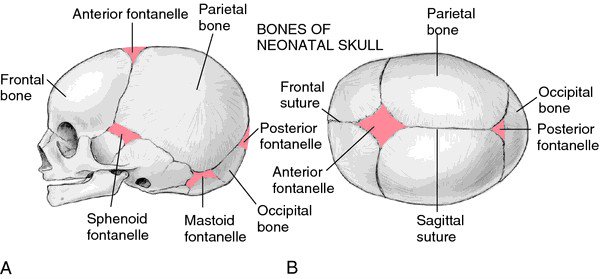
When you should do this depends on the type of cut and where it’s located. You usually need stitches that are over joints, such as your knees and elbows, to stay in for longer than in other places.
With stitches, it’s harder putting them in than taking them out. Your doctor or nurse will cut the stitch at the knot, and then pull out the little thread. You might feel some tugging, but it shouldn’t be painful. It takes less time to remove them than it does to put them in.
You or your child may worry about the scar being left behind after your stitches are out. Here are a few things you can do to make them less visible:
- Protect yourself from the sun. Damaged skin is much more likely to be discolored by the sun for up to 6 months after an injury. Keep covered with a hat or clothing as much as you can. Use sunscreen to lessen any darkening of the scar, but don’t put any on until 2 weeks after the cut has healed.
- Silicone sheets or gels.
 Products with silicone may help soften scars and improve the color if you use them at least 12 hours a day. Talk to your doctor before you do this, though.
Products with silicone may help soften scars and improve the color if you use them at least 12 hours a day. Talk to your doctor before you do this, though. - Onion extract. Your doctor might suggest a cream (Mederma) that contains this extract.
- Massage. Use your fingers and rub the scar in circles with medium pressure. This might help your scar to soften and flatten faster.
Top Picks
Suture care after surgery
Suture care after surgery – recommendations
–
Grudina. ru –
ru –
Useful Information –
News 18
· Patients often have questions about what to do with sutures after surgery, how long it takes to stop wearing the patch, etc. In this regard, we publish the following question.
– “I have a question about the care of stitches after surgery. The extract says: After removing the sutures, peel off the peristrips from the skin after 5 days and stick them on the p / o wound for 4 months. adhesive plaster “Omniplast” 2 cm wide. I was embarrassed by the period of 4 months, do the stitches heal so much?
– “I glued this adhesive plaster in the first 10 days and mainly because you can wash with it (water does not get on the seams). After this period, I did not glue any plasters, everything healed by itself. ”
We would like to add that the sutures from the operation heal on days 8-9, however, the final formation of the scar is carried out only for 4 months. Since the zone is mobile, without strengthening with a plaster, the seams can stretch and turn from a “thread” into scars up to 0.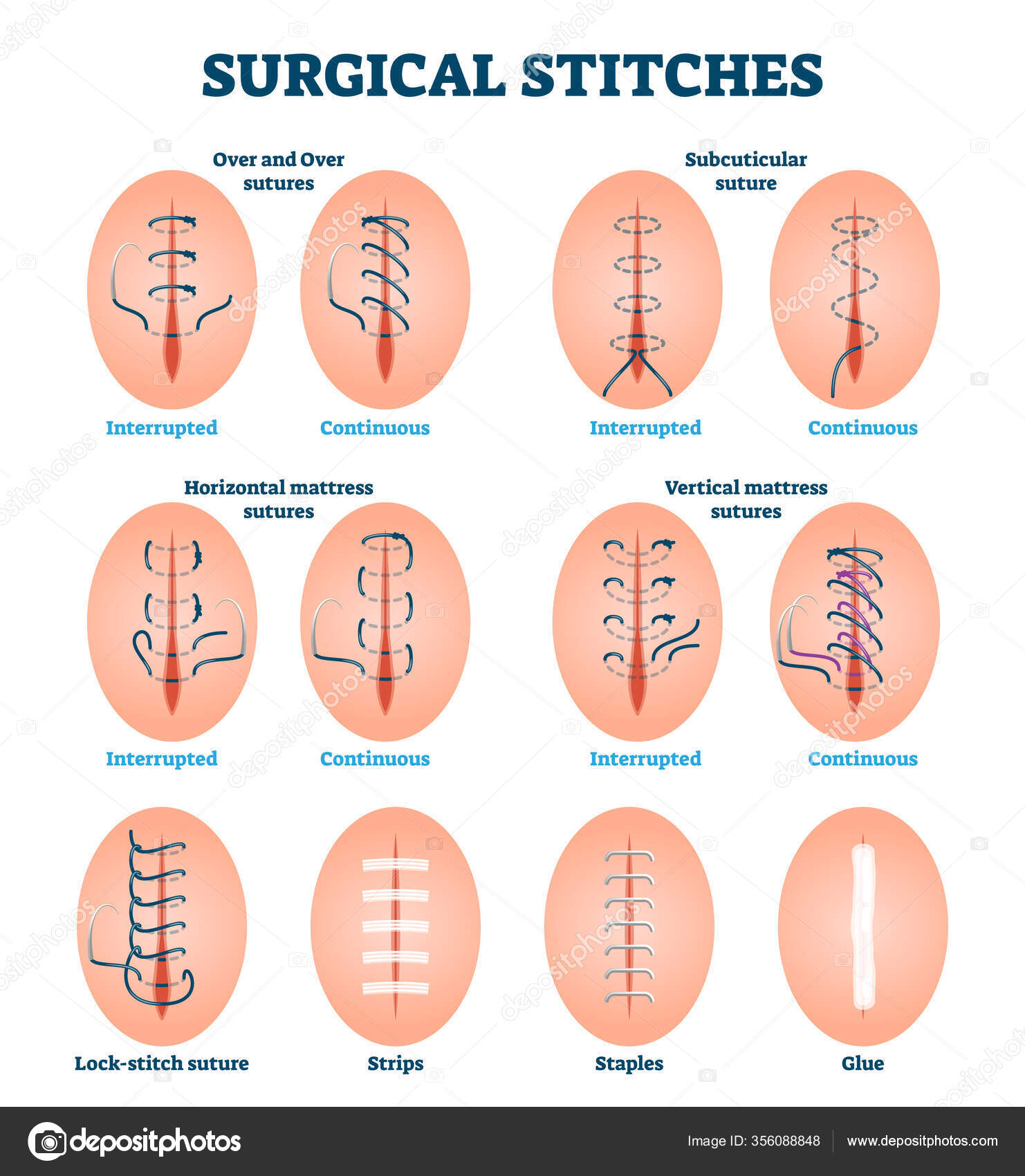 5 cm thick. The final result for the seams is 6 months. By this time, their final merging in skin color occurs. If the patches are not used, then the seams will most likely be thicker – the problem is in the mobility of the zone and constant stretching. A more expensive way is to use surgical strips – they can be left for several days, but protected from getting wet – i.e. during the shower, apply a Cosmopore-type plaster. In the event that self-absorbable sutures were applied, it would also not be superfluous to glue the patch, starting from 12-14 days.
5 cm thick. The final result for the seams is 6 months. By this time, their final merging in skin color occurs. If the patches are not used, then the seams will most likely be thicker – the problem is in the mobility of the zone and constant stretching. A more expensive way is to use surgical strips – they can be left for several days, but protected from getting wet – i.e. during the shower, apply a Cosmopore-type plaster. In the event that self-absorbable sutures were applied, it would also not be superfluous to glue the patch, starting from 12-14 days.
· I would also like to clarify the question of why it is necessary to seal the seams with a plaster after surgery, which patients often ask us about. The fact is that the scar is finally formed after 3 months. Prior to this, when you raise your arms, you always stretch the area of the operation, so fixing the edges with a plaster prevents stretching and ensures that the effect of a cosmetic seam is fixed. One of our patients shared his impressions about the adhesive plaster “Omniplast”:
– “Omniplast patch is very sticky and difficult to remove. I have a feeling that when removing the seams, you can stretch the seams a little, this is already a very difficult task. ”
I have a feeling that when removing the seams, you can stretch the seams a little, this is already a very difficult task. ”
Back to section
Kuzmichev Vladimir Alexandrovich
Thoracic surgeon, candidate of medical sciences
Kuzmichev Vladimir Aleksandrovich — thoracic surgeon, candidate of medical sciences. In 1981, Vladimir Alexandrovich graduated from the MMA named after. I. M. Sechenov. Today he is a practicing thoracic surgeon with extensive experience and high qualifications. Since 2000, she has been working in the Department of Thoracic Surgery, GBUZ MO MONIKI. M.F. Vladimirsky.
–
Useful information –
News –
Suture care after surgery
powered by
incision, sutures, processing, care after surgery
Caesarean section is always performed in the interests of the mother and fetus when a woman cannot give birth through the natural birth canal.
Every year there is an increase in the number of operative delivery in obstetric practice. For example, at 9In the 0s, the number of caesarean sections was 10.2%, and by 2005 it was 17.9% 1 .
For example, at 9In the 0s, the number of caesarean sections was 10.2%, and by 2005 it was 17.9% 1 .
Currently, the number of primiparous women over 35 has increased, as well as the number of in vitro fertilization (IVF). The widespread use of modern methods of fetal diagnostics: ultrasound, cardiac monitoring (registration of fetal cardiac activity and contractile activity of the uterus), X-ray pelvimetry (to determine the degree of narrowness of the bones of the female pelvis) – make it possible to better detect pregnancy anomalies and establish indications for caesarean section.
If indications for a caesarean section are determined during pregnancy, then surgery is planned. With a planned caesarean section, the frequency of postoperative complications is 2-3 times less than with an emergency operative caesarean section.
Vaginal disinfection with a solution of chlorhexidine or povidone-iodine is performed before caesarean section for ruptured membranes and in women in childbirth to reduce the risk of postoperative endometritis (inflammation of the inner layer of the uterus) 2 .
Povidone iodine
Characteristics and properties of povidone iodine. What is povidone-iodine used for? Instructions for use of the solution, ointment, suppositories Betadine ® with povidone-iodine.
More
Types of incisions for caesarean section
By localization incisions on the uterus for caesarean section are: in the lower segment partly in the body of the uterus
Cesarean section is classified as a complex surgical intervention 1 . Most often, manipulation is performed in the lower segment of the uterus with a transverse incision due to better healing of the postoperative wound in this area.
There are 3 types d steps through the anterior abdominal wall :
- Pfannenstiel incision (transverse incision of the skin and subcutaneous tissue along the suprapubic fold)
- Joel-Cohen incision (transverse incision of the skin and subcutaneous tissue 2.
 5-3 cm below the line connecting the anterior superior iliac spines bones)
5-3 cm below the line connecting the anterior superior iliac spines bones) - Inferior median incision (incision along the line between the navel and the pubic bone)
Suturing
After the birth of the child and afterbirth, the uterus, peritoneum, abdominal muscles, and skin are sutured.
Tissue suturing is carried out with absorbable synthetic threads from catgut, vicryl, monocryl and others. Catgut threads dissolve in about 100 days, monocrylic threads in 90-120 days, Vicryl threads will dissolve by 42 days.
Immediately after a caesarean section, cold is applied to the lower abdomen for two hours to reduce bleeding. According to the indications, a woman is prescribed drugs that improve blood flow, painkillers, anticoagulants (prevent the formation of blood clots), oxytocin (improves the contractile function of the uterus), antibiotics. Some time after a caesarean section, unpleasant pain in the lower abdomen will persist.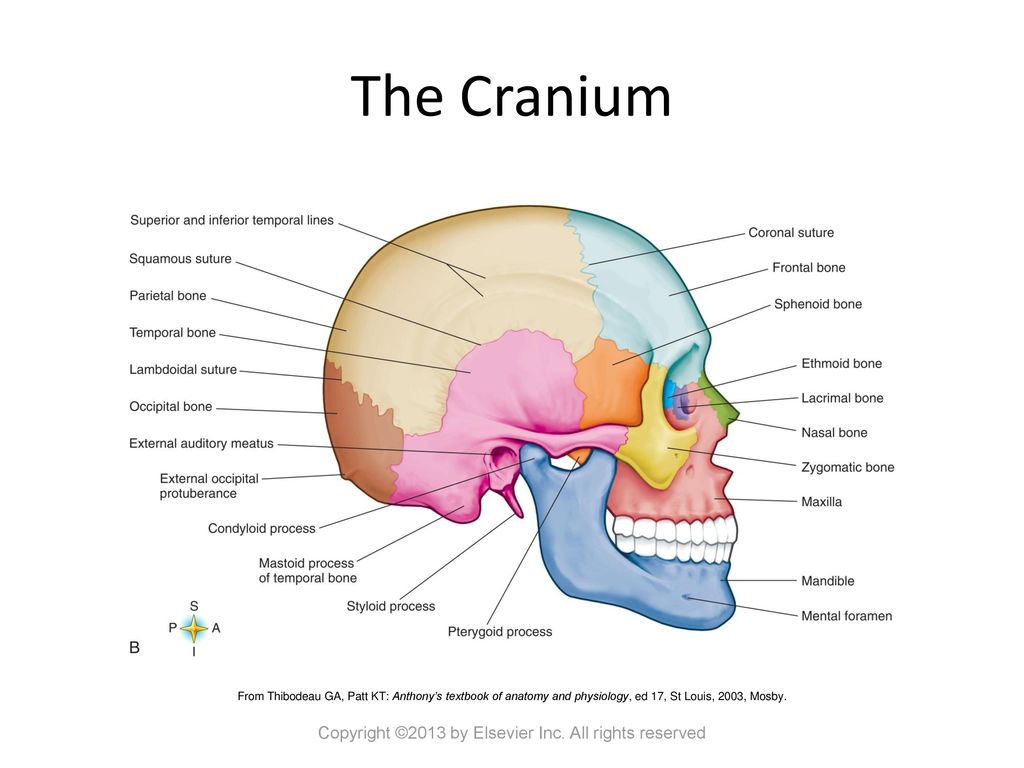 On the 5th day, ultrasound is prescribed to determine the condition of the wound. Staples or sutures from the anterior abdominal wall are removed on the 6-7th day, and on the 8th day the woman is discharged under the supervision of a antenatal clinic doctor at the place of residence.
On the 5th day, ultrasound is prescribed to determine the condition of the wound. Staples or sutures from the anterior abdominal wall are removed on the 6-7th day, and on the 8th day the woman is discharged under the supervision of a antenatal clinic doctor at the place of residence.
How to treat healing wounds, see a short video with surgeon Fedor Yanovich Kraskovsky
Algorithm for treating sutures after cesarean section
6 hours after delivery by caesarean section, the dressing is removed to minimize the risk of wound infection 3 .
Stitches after caesarean section are treated daily 1 .
Processing may include the following steps:
Washing
If washing of the suture area is required, disinfecting solutions can be used: povidone-iodine, potassium permanganate solution, chlorhexidine solution.
Disinfection
At this stage, disinfectants and drying agents are applied: based on iodine, alcohol-containing solutions of brilliant green, fukortsin and others.
Let’s consider the most popular means for decontamination of postoperative sutures.
Applying a dressing
After each treatment of the suture, it is recommended to apply a sterile dressing, which will protect the injured area from external influences.
Povidone-iodine solution (Betadine®)
Povidone-iodine solution ( Betadine ® ) is a modern broad-spectrum antiseptic. It is used in various areas of modern medicine due to its activity against many microorganisms and a favorable benefit/risk ratio.
Solution Betadine ® is active against bacteria, viruses, fungal pathogens and protozoa 4 . In this disinfectant, the iodine molecule is attached to the carrier – povidone, which made it possible to exclude alcohol from the composition and thereby ensure comfortable use of the drug, without burning sensations, even when applied to fresh wounds and sutures.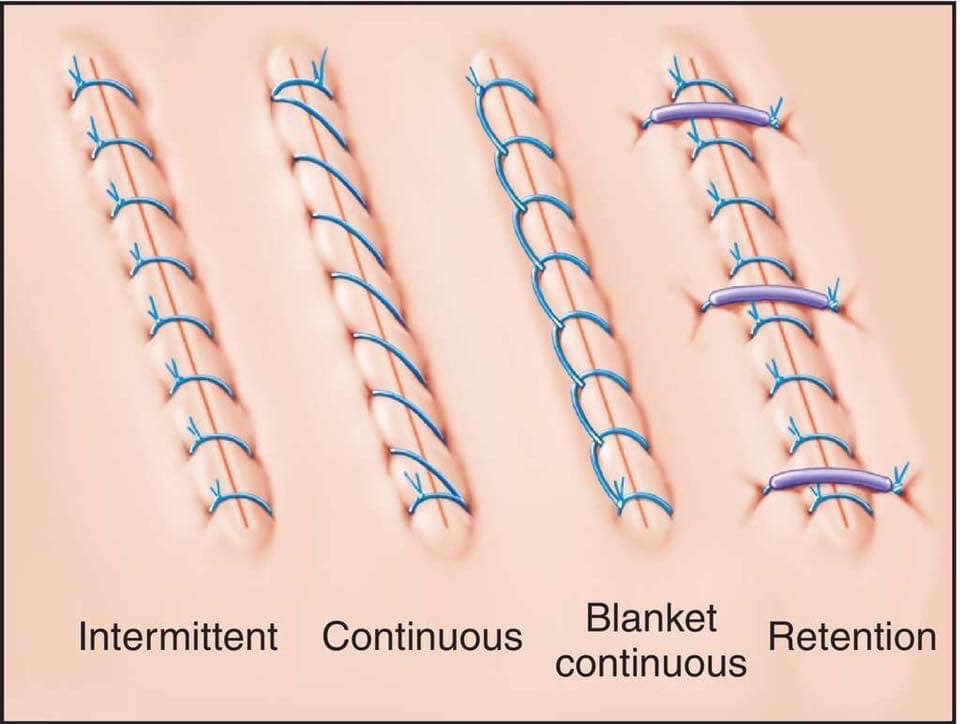 When treating wounds, the components of the solution Betadine ® are practically not absorbed into the body 8 , which ensures a high safety profile.
When treating wounds, the components of the solution Betadine ® are practically not absorbed into the body 8 , which ensures a high safety profile.
Wash with solution Betadine ® diluted 1:10, and used undiluted for joint lubrication. It is important to note separately that the solution Betadine ® allows for comfortable use without burning. Yellow-brown staining is easily washed off the skin with plain water.
Instruction
Where can I buy Betadine® solution?
Buy
Buy
Buy
Or
Find nearest pharmacy
Search
Based on povidone-iodine, Betadine® ointment is produced, which has a dual effect:
- povidone-iodine disinfects
- macrogol, which is part of the ointment, helps to “pull out” pus when it appears as a result of wound complications
Ointment Betadine ® can be used under dressings in a thin layer without rubbing into the incision twice a day.
In the treatment of infected wounds under wipes soaked in solution or Betadine Ointment ® , during the first 5-7 days the area of edema noticeably decreased and the amount of purulent discharge decreased, there was also a decrease in pain 5 .
Instruction
Where to buy Betadine® ointment?
Buy
Buy
Buy
Or
Find the nearest pharmacy0088 belong to the group of oxidizers. Upon contact with an unhealed suture, the active substance decomposes with the release of active oxygen, which causes a disinfecting effect. They are especially effective for suppressing anaerobic infections (clostridia, streptococci, shigella, yersinia, fusobacteria and others), for these microorganisms oxygen is detrimental, since an oxygen-free environment is needed for the normal functioning of these organisms. However, treating a wound with hydrogen peroxide does not guarantee against contracting a wound infection 6 must not be used under occlusive (airtight) dressings 4 .
Use of hydrogen peroxide may cause allergic reactions 7 .
To prepare a solution of potassium permanganate, several crystals of potassium permanganate are placed in a container with warm water, using only freshly prepared agent 8 . Potassium permanganate is subject to special control and accounting in the Russian Federation, therefore, the sale of this product is limited. Moreover, an undissolved crystal of potassium permanganate can cause skin burns.
Chlorhexidine solution
Chlorhexidine solution 9 belongs to the group of antiseptic and disinfectants, active against viruses, bacteria, fungal infections. Use 2-3 times a day with a mandatory exposure of 1-3 minutes. Simultaneous use with iodine is not recommended. It is used with caution during breastfeeding.
In addition, today there is a decrease in the effectiveness of a number of antiseptic preparations having a chlorine-containing molecule 11 .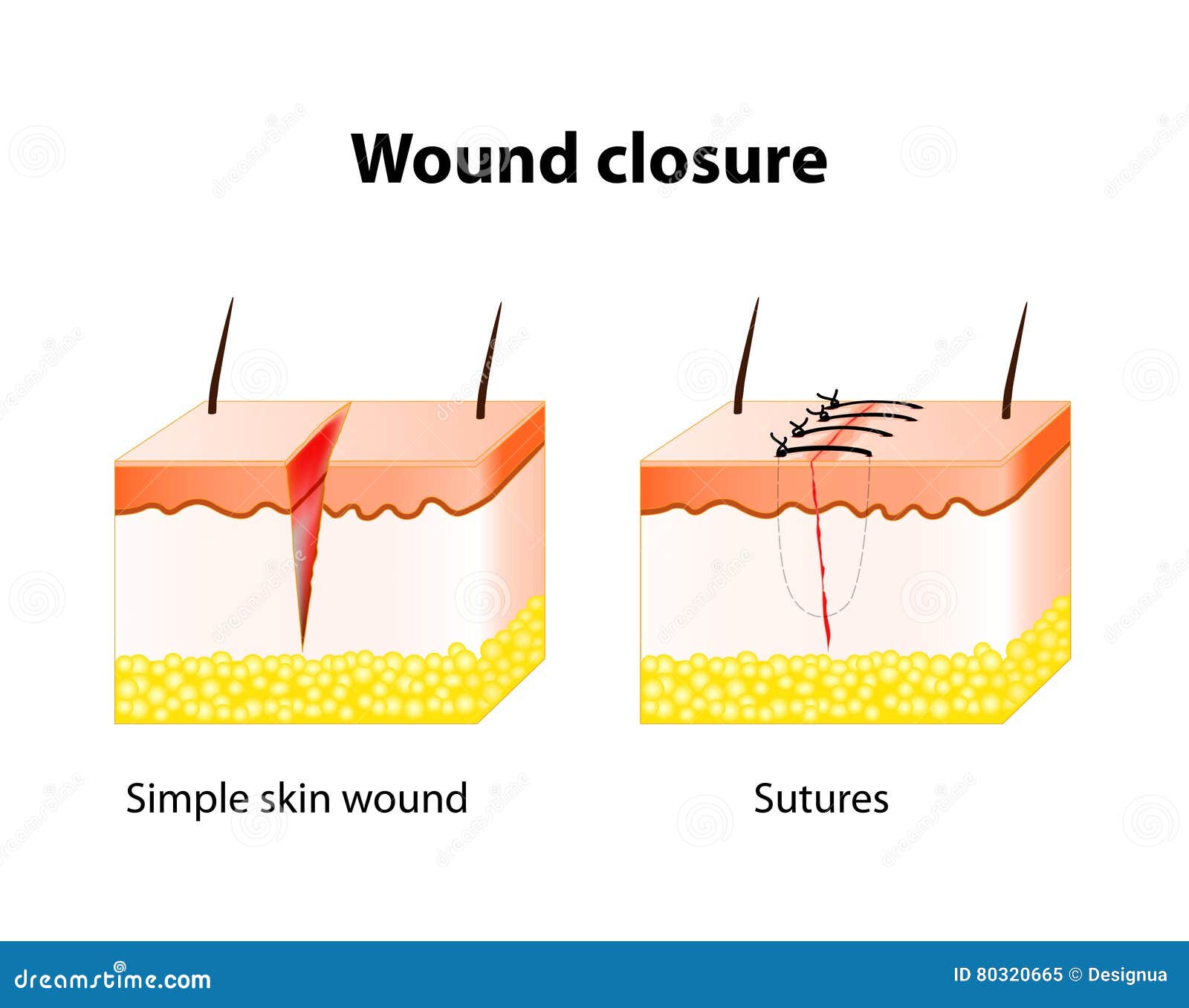
Care of a maturing scar
After the sutures have dissolved, the wound has healed, scar tissue begins to form. At this stage, to prevent the development of rough scars, it is recommended to use creams and gels based on silicone, hyaluronidase, natural plant components (for example, combined preparations based on onion extract, sodium heparin and allantoin).
Possible complications from improper or no handling
On the first day after caesarean section, the temperature may rise to 38°C and the number of leukocytes in the blood may increase 3 .
In the modern medical community, the strategy of “Accelerated recovery after surgery” is actively practiced – the woman in labor is prescribed pain relief, prevention of postoperative blood clots, and early physical activity is recommended.
4-6 hours after the operation, they are allowed to sit up in bed, put their feet on the floor, then walk. This reduces the risk of thrombosis, congestion in the lungs, the formation of adhesions in the abdominal cavity 3 .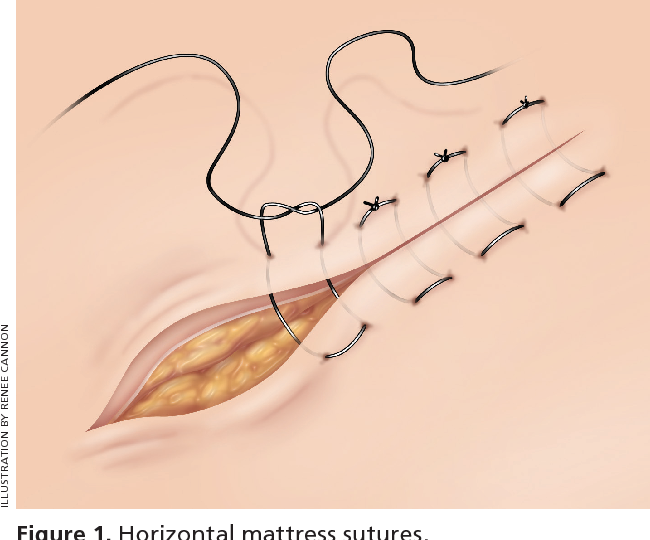
However, a woman may experience the following problems with suture healing: Therefore, after the operation, it is not recommended to lift weights.
Formation of a hypertrophic or keloid scar
- If the scar tissue begins to protrude above the surface of the skin, then most likely a hypertrophic or keloid scar has formed 10 .
- Keloid scars form not earlier than 3 months after suture, may extend beyond the suture, often accompanied by pain 10 . Grow indefinitely.
- Hypertrophic scars begin to form in the first month after skin injury, do not extend beyond the suture, and grow over the next 6 months. Hypertrophic scars can spontaneously decrease in size.
Infection/suppuration of the wound
Signs of infection are: increasing pain in the suture area, swelling, redness of the skin, the suture may become hot to the touch, pus may be released when pressed. Infection of the wound slows down the healing process and the inflammatory process can spread to the abdominal muscles and abdominal cavity, which can be life threatening.
Infection of the wound slows down the healing process and the inflammatory process can spread to the abdominal muscles and abdominal cavity, which can be life threatening.
Therefore, it is important to keep the area of the healing suture clean, treat it with antiseptics in a timely manner, do not touch it with unwashed hands, and wear clean underwear.
As the postoperative wound heals, itching may occur in the area of scar formation. This is the norm when healing any wounds, the main thing is not to accidentally injure the suture and not to remove the suture material on your own.
Frequently Asked Questions
When can I bathe after a caesarean section?
The bandage from the suture after caesarean section is removed after 6 hours, after which it is possible to take a shower daily 3 .
How do you know if the suture is healing properly after a caesarean section?
Over time, swelling and soreness should decrease, as well as the amount of sanious discharge in the suture area.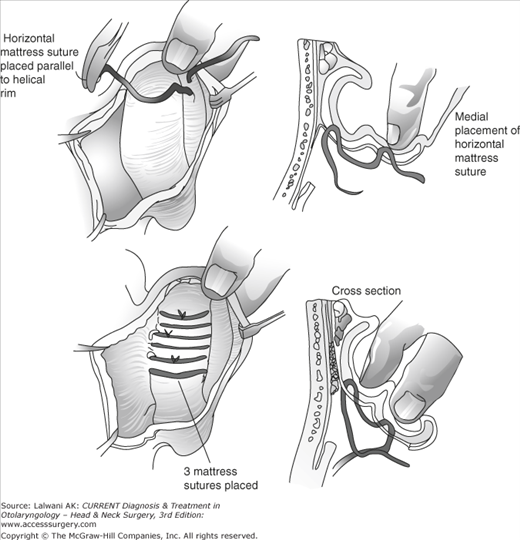 There should be no purulent discharge. The skin around the suture becomes normal in color, although the scar itself may remain red for several months.
There should be no purulent discharge. The skin around the suture becomes normal in color, although the scar itself may remain red for several months.
How can ugly scars after caesarean section be treated?
For the treatment of keloid and hypertrophic scars, doctors prescribe 10 :
- course intralesional administration of anti-inflammatory hormonal drugs
- exposure to liquid nitrogen once every 3-4 weeks, at least 3 procedures per course
- laser exposure (pulsing laser on dyes or based on carbon dioxide)
- surgical excision
To prevent the formation of scars after healing of the suture, preparations based on hyaluronidase, plant extracts, and silicone are prescribed.
How long can you not lift weights?
To reduce the load on the abdominal muscles and improve their healing, physical activity is limited to 1.5 months.
Moshkova Elena Mikhailovna
Dermatovenereologist, Head of the CDO for the provision of paid services, St. Petersburg State Budgetary Institution of Healthcare “City Dermatovenerological Dispensary”, St. Petersburg
Petersburg State Budgetary Institution of Healthcare “City Dermatovenerological Dispensary”, St. Petersburg
Read on the topic
Ointment based on iodine 900 88
Iodine-based ointment : mechanism of action, scope. Ointment Betadine® based on povidone-iodine for the treatment of various skin diseases.
More
Povidone iodine
Characteristics and properties of povidone iodine. What is povidone-iodine used for? Instructions for use of the solution, ointment, suppositories Betadine ® with povidone-iodine.
More
Infected wounds
Not all abrasions and cuts heal quickly and without complications. How to treat infected wounds?
Read more
References
- National Guide to Obstetrics. Edited by E.K. Ailamazyan, V.I. Kulakova, V.E. Radzinsky, G.M. Savelyeva, 2015.
- Clinical guidelines. Singleton birth, delivery by caesarean section, 2021.

- Clinical guidelines. Singleton birth, delivery by caesarean section, 2020.
- Instructions for medical use Betadine ® (solution, ointment), P N015282/03, P N015282/02.
- BC No. 29 dated 12/23/2010 “The use of the drug Betadine ® in the treatment of infected wounds.” Authors: V.V. Mikhalsky, A.E. Bogdanov, S.V. Zhilina, A.I. Prvidentsev, A.I. Anikin, A.A. Ulyanina.
- Hydrogen peroxide, 3% solution, radar.
- Rational pharmacotherapy of skin diseases and sexually transmitted infections. Edited by A.A. Kubanova, 2007.
- Potassium permanganate, powder. radar.
- Chlorhexidine solution, radar.
- “Federal Clinical Guidelines for the Management of Patients with Keloid and Hypertrophic Scars”, 2015
- “Prevalence of microbial resistance to chlorhexidine from a systematic review and analysis of regional resistance monitoring.” Authors: Kvashnina D.V., Kovalishena O.V. Fundamental and clinical medicine.


 You could pull them out.
You could pull them out. Use sunscreen to lessen any darkening of the scar, but don’t put any on until 2 weeks after the cut has healed.
Use sunscreen to lessen any darkening of the scar, but don’t put any on until 2 weeks after the cut has healed. If you can, control the spray and protect your wound in a shower. Use a softer setting if you can. When your stitches get wet, pat them dry with a towel.
If you can, control the spray and protect your wound in a shower. Use a softer setting if you can. When your stitches get wet, pat them dry with a towel./young-female-surgeon-holding-surgical-needle--focus-on-needle--200263662-001-5a9ec80fba617700371e814d.jpg) Products with silicone may help soften scars and improve the color if you use them at least 12 hours a day. Talk to your doctor before you do this, though.
Products with silicone may help soften scars and improve the color if you use them at least 12 hours a day. Talk to your doctor before you do this, though. 5-3 cm below the line connecting the anterior superior iliac spines bones)
5-3 cm below the line connecting the anterior superior iliac spines bones)